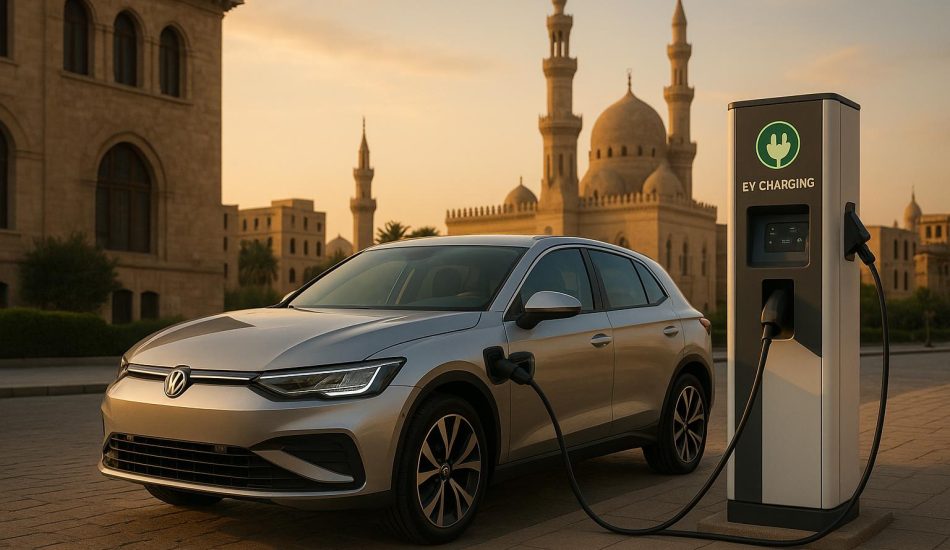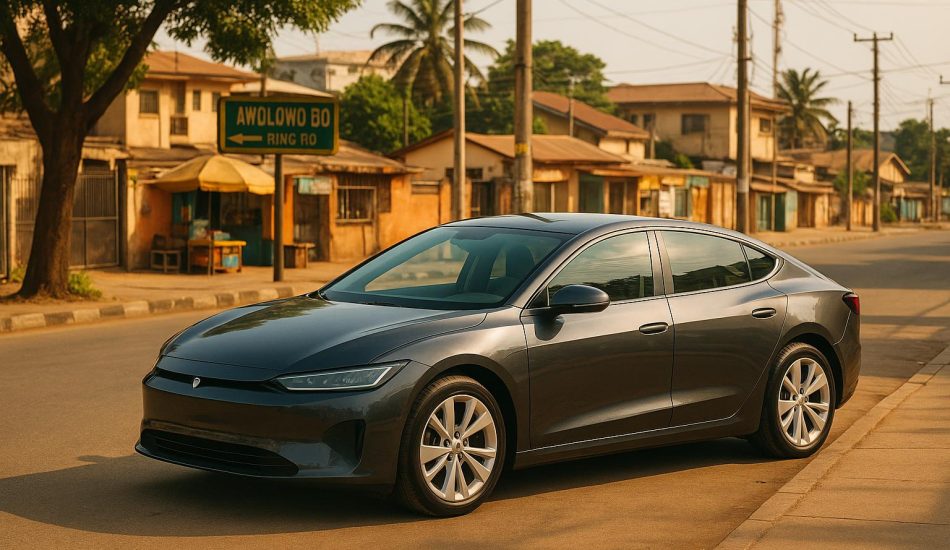
Kenya’s electric vehicle (EV) market is booming, with government incentives, growing charging infrastructure, and a shift towards renewable energy making EVs more accessible. Whether you’re looking for affordable options or premium models, here are the top electric cars to consider importing to Kenya:
- Nissan Leaf: Budget-friendly, reliable, with a range of 149–212 miles. Prices start at $10,400 for used models.
- Tesla Model Y: Premium SUV with advanced tech and a range of up to 364 miles. Costs start at $51,880.
- BYD Dolphin: Affordable and compact, offering a range of 249–265 miles for $13,700+.
- Hyundai Kona Electric: Mid-range SUV with a 200–261 mile range, priced at $32,975+.
- Renault Zoe: Perfect for city driving, with a range of 245 miles and starting at $16,000.
- Kia EV6: Stylish with fast charging and a range of 273–319 miles, priced at $42,000+.
- Xpeng G6: Advanced features, fast charging, and a range of 270–354 miles for $28,000+.
- BMW iX3: Luxury SUV with a 285-mile range, starting at $120,000.
- Ora Good Cat: Compact with a range of 249–311 miles, priced between $20,000–$32,000.
- Volkswagen ID.4: Spacious SUV with a range of 206–291 miles, starting at $38,000.
Quick Comparison
| Model | Price (USD) | Range (miles) | Battery (kWh) | Best For |
|---|---|---|---|---|
| Nissan Leaf | $10,400–$20,000 | 149–212 | 40–62 | Budget-conscious buyers |
| Tesla Model Y | $51,880+ | 311–364 | 75–82 | Premium SUV lovers |
| BYD Dolphin | $13,700+ | 249–265 | 44.9–60.4 | Affordable urban driving |
| Hyundai Kona Electric | $32,975+ | 200–261 | 48.6–64.8 | Mid-range SUV seekers |
| Renault Zoe | $16,000–$28,000 | 245 | 52 | City commuters |
| Kia EV6 | $42,000+ | 273–319 | 63–84 | Stylish, tech-savvy drivers |
| Xpeng G6 | $28,000+ | 270–354 | 68.5–80.8 | Advanced tech enthusiasts |
| BMW iX3 | $120,000+ | 285 | 74 | Luxury SUV buyers |
| Ora Good Cat | $20,000–$32,000 | 249–311 | 47.8–63.1 | Compact, budget-friendly |
| Volkswagen ID.4 | $38,000–$45,000 | 206–291 | 52–77 | Spacious family SUV |
Kenya’s lower taxes on EVs, growing charging network, and renewable energy sources make this the perfect time to switch to electric. Whether you need a cost-effective city car or a high-performance SUV, there’s an EV for you. Dive into the full article for import tips and detailed insights into each model.
Taxes Threaten Chinese EVs Adoption in Kenya
1. Nissan Leaf
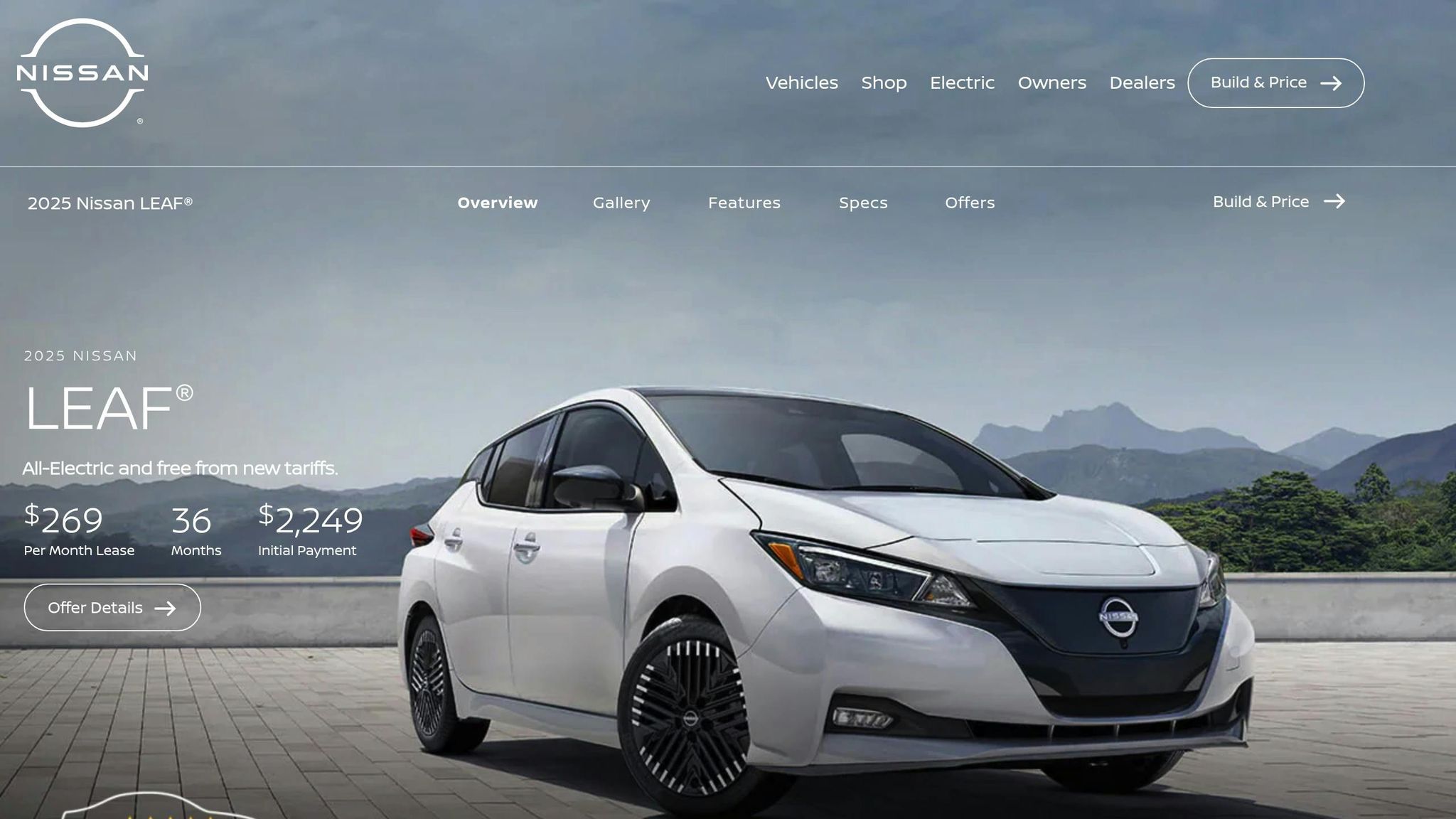
The Nissan Leaf stands out as Kenya’s most accessible electric vehicle, offering a balance of practicality, affordability, and reliability. This compact EV has become a popular choice for those looking to make the switch to electric transportation.
Affordability
One of the biggest draws of the Nissan Leaf is its cost-effectiveness, especially under Kenya’s favorable EV policies. With a flat 10% excise duty – lower than that for combustion engine vehicles – the Leaf becomes an economical option. Depending on the model year and condition, used Nissan Leafs are priced between KSh 1,100,000 and KSh 2,500,000. This price range makes it an attractive choice for budget-conscious buyers.
Range and Battery Capacity
The Nissan Leaf offers two battery options to cater to different driving needs. The 40 kWh battery delivers a range of about 149 miles (240 km), while the 60 kWh version extends that to approximately 212 miles (341 km). These ranges are well-suited for daily urban commutes, particularly as Kenya continues to expand its charging infrastructure. Additionally, the Leaf’s regenerative braking system helps recover energy on downhill drives, further improving efficiency. To maintain battery health, it’s recommended to keep charge levels between 20% and 80% and to park in shaded areas when possible.
These features make the Leaf a practical choice for both city driving and areas with emerging charging networks.
Suitability for Kenya’s Infrastructure
With its compact size, the Nissan Leaf handles urban traffic with ease and fits comfortably into standard parking spaces. While its low ground clearance is ideal for paved city roads, it may pose challenges on rough rural terrain. However, the growing charging network in Kenya’s major urban areas supports the Leaf’s operational needs, making it a viable option for city dwellers.
Availability in Right-Hand Drive
Kenya’s left-side driving system requires right-hand drive vehicles, and the Nissan Leaf meets this requirement. Most imports come from Japan, where right-hand drive is standard. Companies like Cars Kenya specialize in importing these vehicles, ensuring a consistent supply that complies with local regulations. This makes the Leaf a convenient and legal choice for Kenyan drivers.
2. Tesla Model Y
The Tesla Model Y has established itself as a standout option in Kenya’s premium EV market, combining advanced technology, impressive range, and the support of Tesla’s Supercharger network. While it comes with a premium price, the Model Y offers features and performance that make it a compelling choice for buyers looking for a high-end electric SUV.
Range and Battery Capacity
The Long Range All-Wheel Drive version of the Model Y delivers up to 364 miles (586 km) WLTP, while the Rear-Wheel Drive variant offers 311 miles (500 km). In everyday conditions, drivers can expect real-world ranges between 202 miles (325 km) and 404 miles (650 km).
The vehicle’s 75 kWh usable battery capacity supports fast charging, reaching 10–80% in just 30 minutes at a charging speed of 250 kW. These capabilities align well with Kenya’s growing EV infrastructure, making the Model Y a practical choice for long-distance travel.
Suitability for Kenya’s Infrastructure
Kenya’s rapidly expanding charging network complements the Model Y’s long range and fast-charging capabilities. As of May 2025, the country had registered 9,047 EVs, a significant increase from 2,694 in 2023 to 5,294 in 2024. Additionally, Kenya has set an ambitious goal to establish 10,000 EV charging stations by 2030, creating a supportive environment for EV adoption.
Kenya Power is actively developing charging stations across key cities, including Nairobi, Nyeri, Kisumu, Eldoret, Nakuru, Mombasa, and Taita-Taveta. Plans include six charging stations at Jomo Kenyatta International Airport, with an investment of up to KSh 258 million ($1.9 million) over three years to enhance EV infrastructure. The upcoming Usahihi Nairobi–Mombasa Expressway will also feature EV charging points along its route, further boosting convenience for EV owners.
Availability in Right-Hand Drive
The Tesla Model Y is offered in a right-hand drive configuration, meeting Kenya’s driving regulations. Tesla CEO Elon Musk highlighted the company’s commitment to right-hand drive markets in March 2022, stating:
"We’re working on accelerating RHD Model Y production. Didn’t expect demand to be so high!"
This dedication positions the Model Y as a strong contender for Kenya’s growing community of EV enthusiasts, offering both practicality and cutting-edge technology tailored to local needs.
3. BYD Dolphin
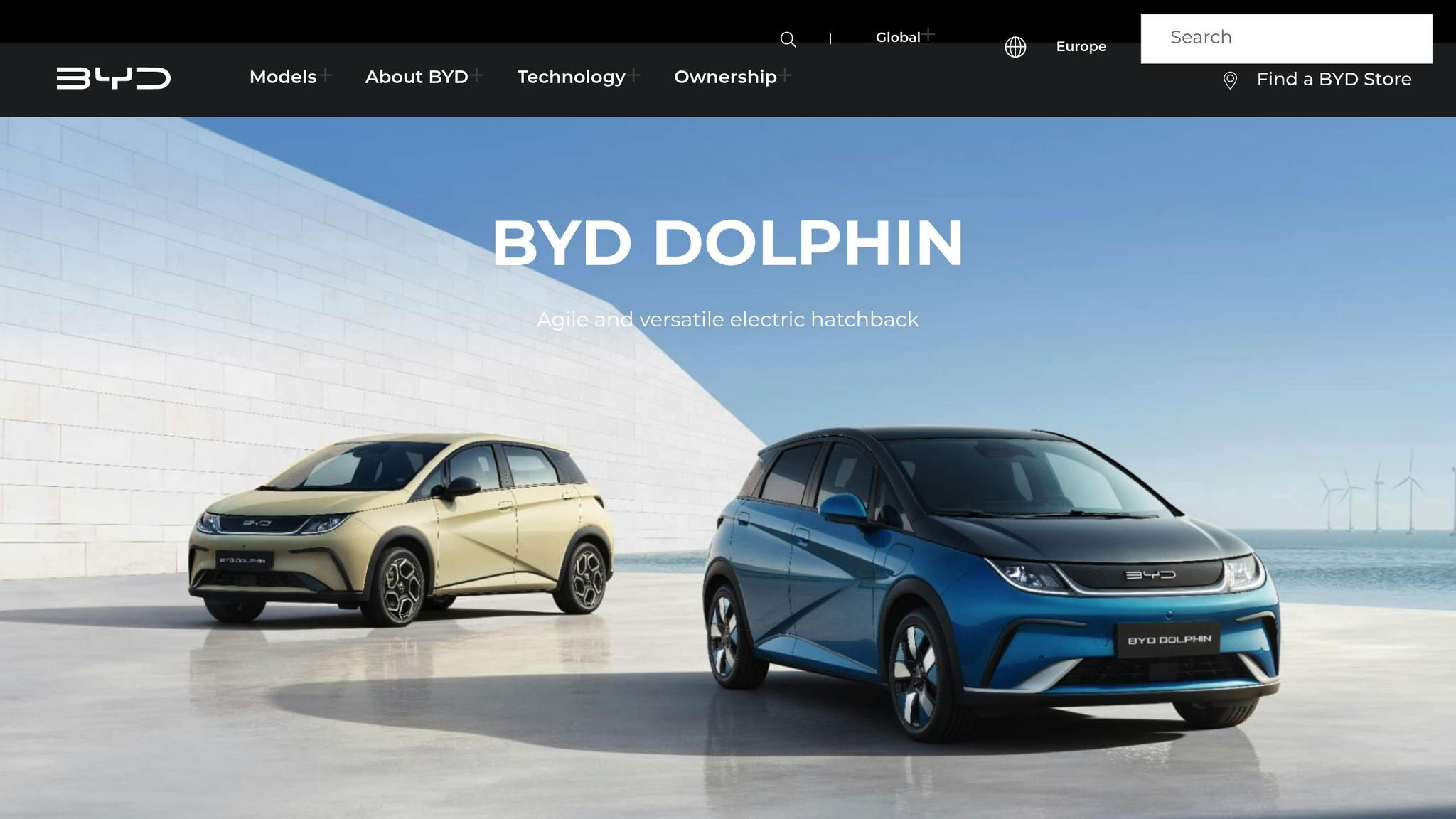
The BYD Dolphin is making waves in Kenya’s electric vehicle (EV) market as one of the most budget-friendly options for import. Priced at just $13,700, this compact EV strikes a balance between affordability and essential features, making it a practical choice for Kenyan drivers exploring electric mobility.
Affordability
At $13,700, the BYD Dolphin sets a new standard for cost-effective EVs in Kenya. Its price point opens the door for more people to consider switching to electric, making it a compelling option for those looking for an economical yet reliable EV.
Beyond its affordability, the Dolphin also delivers solid performance and range, making it a practical solution for daily commuting and longer drives.
Range and Battery Capacity
The BYD Dolphin comes with multiple battery configurations, featuring the BYD Blade LFP battery technology. The largest option, a 60.4 kWh battery, offers an impressive range of 265 miles (427 km), while smaller configurations provide around 249 miles (400 km). Its compact size – measuring 4,290 mm in length – ensures it’s easy to navigate through urban streets while also offering a spacious interior for passengers. These features make it well-suited for both city driving and trips to rural areas in Kenya.
Suitability for Kenya’s Infrastructure
The Dolphin’s design is tailored for practicality and low maintenance, which aligns well with Kenya’s growing EV infrastructure. Its compact build and efficient battery are ideal for the country’s expanding charging network. Combined with its affordability and dependable performance, the Dolphin is a strong contender for Kenyan drivers transitioning to electric vehicles.
Availability in Right-Hand Drive
To meet local requirements, the BYD Dolphin is available in a right-hand drive configuration, ensuring it fits seamlessly into Kenya’s road system. In September 2024, BYD officially introduced the Dolphin to Kenya, alongside the Seal and Atto 3 models, through Loxea. As a local Toyota dealer and the exclusive distributor of BYD electric vehicles in Kenya, Loxea provides flexible purchasing options, including leasing and direct sales. This setup ensures proper after-sales support and service availability, making the Dolphin an even more attractive choice for Kenyan buyers.
4. Hyundai Kona Electric
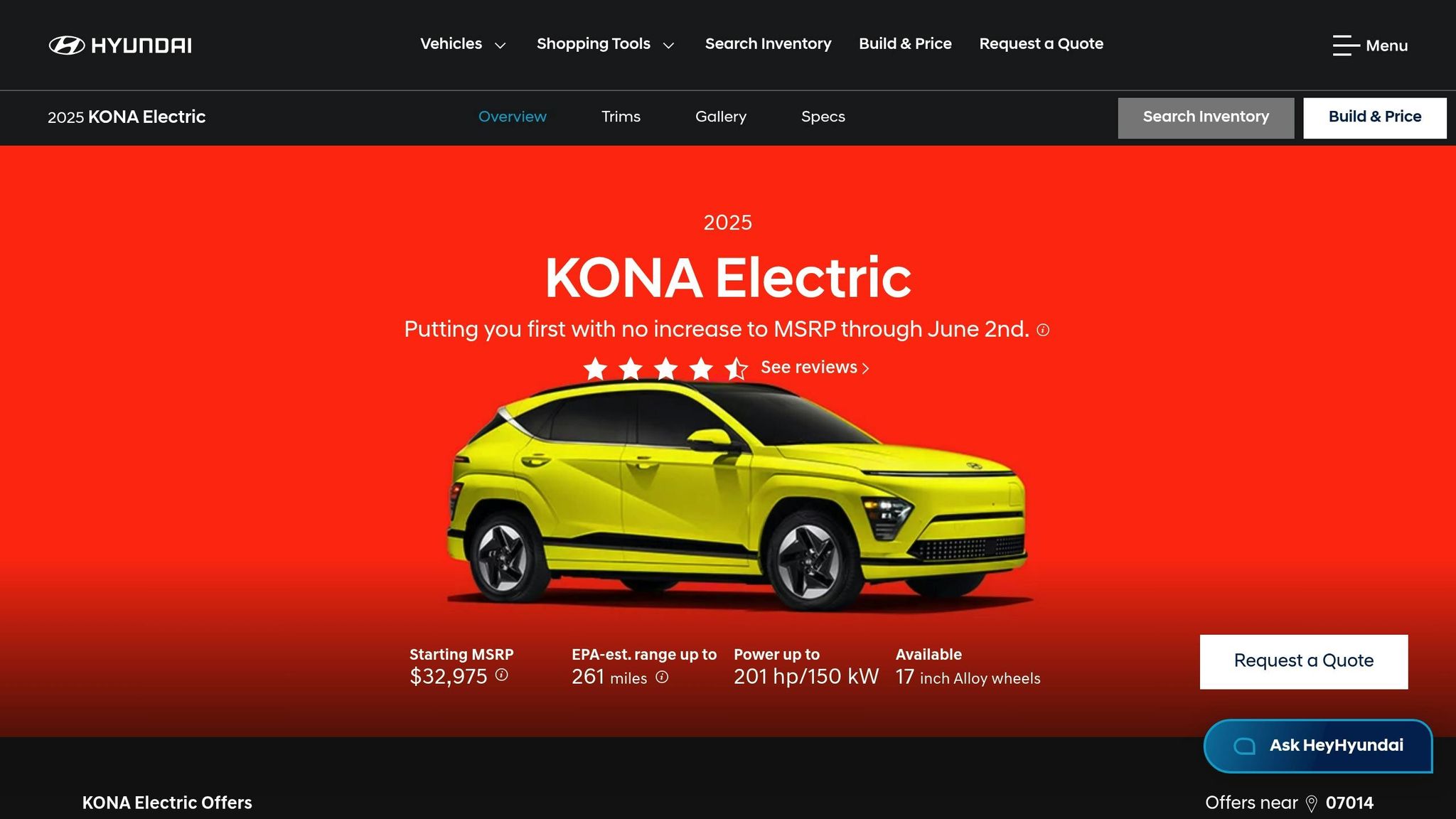
The Hyundai Kona Electric strikes a solid balance between performance and value, making it a compelling choice for buyers in Kenya. With prices ranging from $32,975 for the base SE model to $41,150 for the Limited version, this compact SUV offers impressive range and features suited to Kenya’s unique driving conditions.
Affordability
Positioned as a mid-range electric vehicle, the Kona Electric stands out as one of the most budget-friendly options offering over 200 miles of range. Buyers can choose from multiple configurations to find the right mix of features and price. In Kenya, the model is backed by a strong warranty package: a 5-year/100,000 km warranty for the vehicle and an 8-year/160,000 km warranty for the battery.
Range and Battery Capacity
The 2025 Kona Electric comes with two battery options. The standard 48.6 kWh battery offers an EPA-estimated range of 200 miles (322 km), while the larger 64.8 kWh battery extends the range to 261 miles (420 km). In real-world conditions, Car and Driver reported that the larger battery delivered around 230 miles (370 km). Charging is quick and convenient with a 400V DC fast charger, which can recharge the battery from 10% to 80% in about 43 minutes. Additionally, the vehicle features vehicle-to-load (V2L) technology, allowing it to power external devices – a practical feature for camping or emergency situations.
Designed for Kenya’s Roads
The Kona Electric handles Kenya’s varied terrain with ease. With a ground clearance of 5.9 inches (15 cm), it can navigate uneven or rural roads without trouble. Its suspension system is well-tuned to absorb shocks from potholes and rough surfaces, ensuring a comfortable ride even on challenging roads.
Right-Hand Drive and Local Availability
The Kona Electric is available in Kenya in a right-hand drive configuration, meeting local road requirements. Hyundai’s official dealer, Caetano, ensures easy access to this model. In November 2022, Kenya Electricity Generating Company PLC (KenGen) acquired several Kona Electric units as part of its initiative to adopt electric vehicles. KenGen also introduced four EVs, including two SUVs, to collect data and support policy development, with plans to establish over 30 EV charging stations across the country in 2023.
5. Renault Zoe
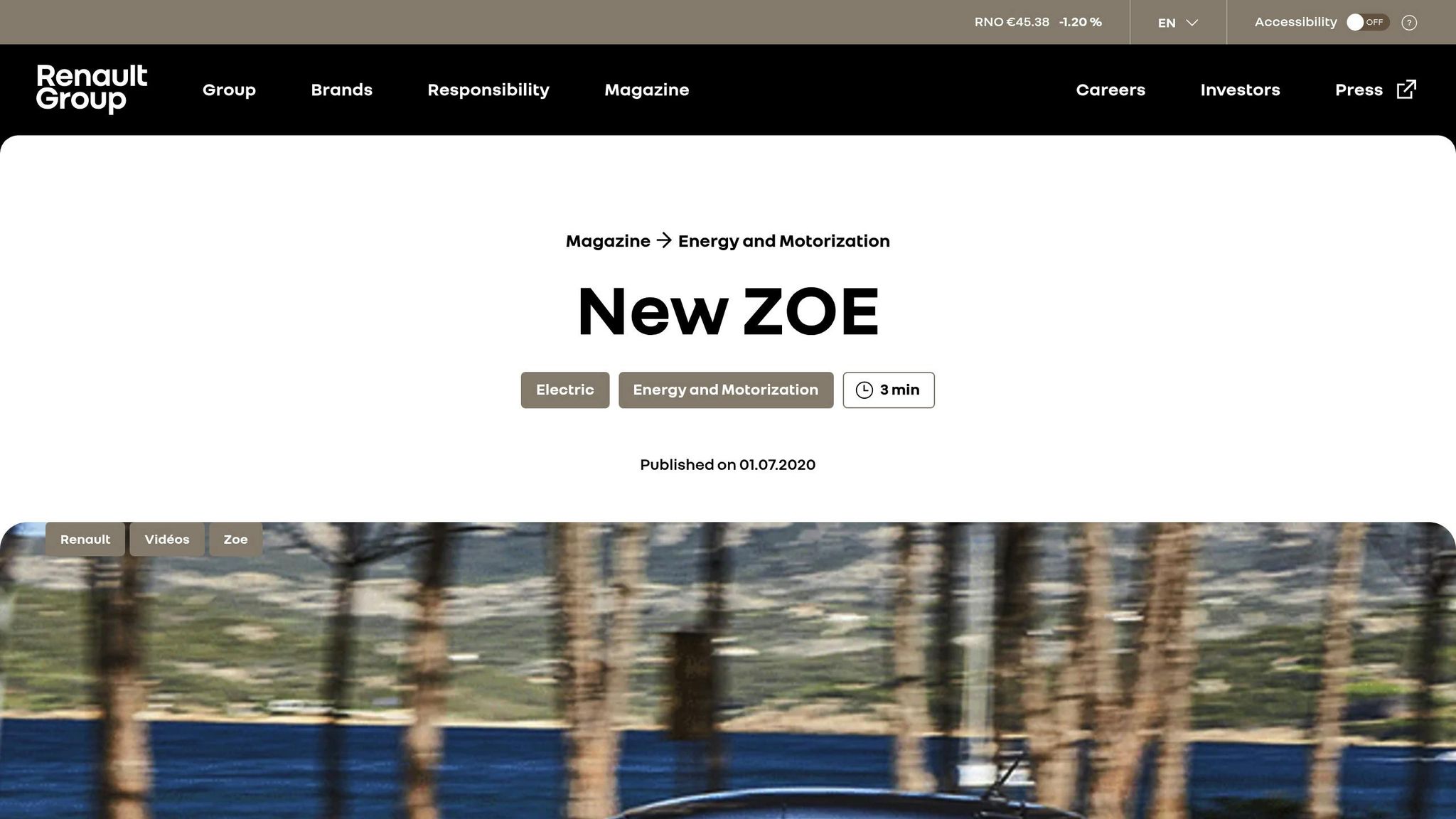
Affordability
The Renault Zoe stands out as one of the most wallet-friendly electric vehicles (EVs) available for import into Kenya. With its compact design and focus on city driving, it’s a perfect option for those looking to step into the world of electric mobility without breaking the bank. Its smaller battery configurations help keep costs in check while still delivering a reliable and efficient driving experience. Even pre-owned Renault Zoe models maintain their affordability, making them an appealing choice for budget-conscious buyers.
Range and Battery Capacity
The Renault Zoe offers a range that comfortably covers daily commutes and even some longer trips. The ZE50 R135 variant can reach up to 385 km on a single charge, while the ZE50 R110 model slightly edges it out with a range of around 395 km. Equipped with a 52 kWh battery pack, the Zoe is capable of delivering up to 245 miles (approximately 394 km) between charges. For earlier models, like the 22 kWh version, the range typically falls between 120 km and 150 km under regular driving conditions, though careful driving can stretch it to over 180 km.
When it comes to charging, the Renault Zoe offers several options to suit different needs:
| Charging Type | Time (Empty to Full) | Range per Hour |
|---|---|---|
| Wall plug (2.3 kW) | 26h 45m | 14 km/h |
| 1-phase 16A (3.7 kW) | 16h 45m | 23 km/h |
| 1-phase 32A (7.4 kW) | 8h 30m | 45 km/h |
| 3-phase 16A (11 kW) | 5h 45m | 67 km/h |
| 3-phase 32A (22 kW) | 3h | 128 km/h |
This level of flexibility, combined with Kenya’s growing charging infrastructure, makes the Zoe a practical choice for a variety of driving needs.
Suitability for Kenya’s Infrastructure
The Renault Zoe is well-suited to Kenya’s evolving EV landscape. It features a Type 2 AC charging port and supports CHAdeMO DC fast charging, enabling drivers to use both home charging setups and the expanding network of public charging stations. Its compact size is a bonus for navigating crowded urban areas, where parking and maneuverability are often challenging.
Availability in Right-Hand Drive
The Renault Zoe is available in a right-hand drive configuration, meeting Kenya’s road regulations. With its presence already established in East Africa, including Tanzania, Kenyan buyers can benefit from existing import channels and service networks. This growing support structure makes the Zoe an increasingly accessible option for local EV enthusiasts.
6. Kia EV6

Range and Battery Capacity
The 2025 Kia EV6 comes with two battery options: a standard 63.0 kWh pack and an optional 84.0 kWh pack. The larger battery offers an impressive all-electric range of 319 miles (513 km) in the Light LR, Wind, and GT-Line trims with rear-wheel drive (RWD). For the Long Range all-wheel drive (AWD) model, the range is slightly lower at around 273 miles (440 km). Thanks to its 800-volt DC fast charging system, the EV6 can recharge from 10% to 80% in just about 20 minutes, adding roughly 200 miles in only 18 minutes. This charging speed outpaces competitors like the Ford Mustang Mach-E and Volkswagen ID.4. It’s worth noting that AWD models tend to have a slightly reduced range compared to their RWD counterparts. These features make the EV6 a strong contender for Kenya’s diverse driving conditions.
Suitability for Kenya’s Infrastructure
With its crossover design and available AWD, the EV6 is well-suited for both urban streets and rural roads in Kenya. The GT-Line AWD trim offers 320 horsepower, and its low center of gravity ensures better stability on curvy or uneven terrain. However, prospective buyers should check the ground clearance to ensure it meets their needs for rural driving, as some reviews mention a firm ride quality that might impact comfort on rougher roads.
Availability in Right-Hand Drive
The Kia EV6 meets Kenya’s right-hand drive requirements and is available in several right-hand drive markets, including the UK, Ireland, Australia, and New Zealand. Caetano Kenya, the official distributor for Kia vehicles in the country, provides local service support and access to parts, ensuring a smoother ownership experience.
The EV6 has earned accolades such as the 2022 European and Irish Car of the Year awards. Additionally, Car and Driver gave the 2025 Kia EV6 an impressive 9.5 out of 10 rating and included it on their Editors’ Choice list.
"Whether it’s the full-kill GT version or the long-range version, every version of the EV6 delivers a great all-around EV driving experience."
– Drew Dorian, Car and Driver
sbb-itb-99e19e3
7. Xpeng G6
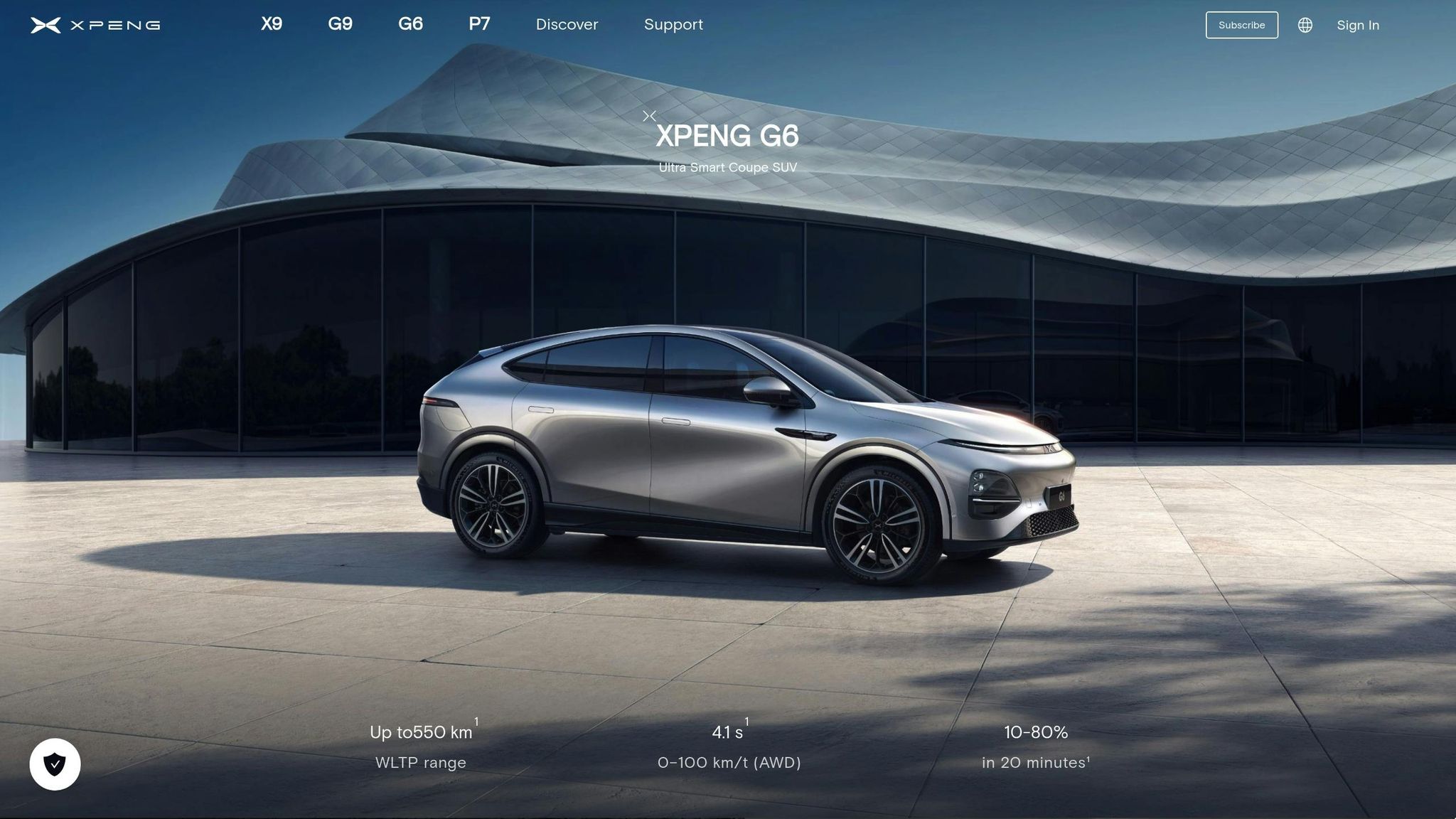
Range and Battery Capacity
The Xpeng G6 is designed to cater to a variety of driving conditions, making it well-suited for Kenya’s diverse landscapes. Depending on the selected battery and drivetrain, this model offers a WLTP range between 270 and 354 miles (435 km to 570 km). In real-world scenarios, the Long Range RWD version delivers around 214 miles (345 km) on highways during cold weather and up to 435 miles (700 km) in city driving under mild conditions.
The 2025 refresh brought new battery options: a 68.5 kWh LFP battery and an 80.8 kWh NMC battery. Both feature 5C charging technology, enabling a 10% to 80% charge in just 12 minutes. The standard system can handle up to 280 kW, achieving the same 10-80% charge in under 20 minutes. This fast-charging capability is particularly beneficial as Kenya’s charging infrastructure continues to expand.
Suitability for Kenya’s Infrastructure
The G6’s advanced 800V architecture provides a charging edge, but it’s essential for buyers to confirm compatibility with Kenya’s evolving network of charging stations. Equipped with a CCS2 charging port, the G6 is prepared for global standards, which are increasingly being adopted. Its aerodynamic design, with a drag coefficient of 0.248, enhances highway efficiency. Additionally, the car’s front double wishbone independent suspension and rear multi-link independent suspension are built to handle a variety of road conditions. However, ground clearance specifications are not readily available and should be checked, particularly for rural driving needs.
Availability in Right-Hand Drive
The G6 is available in right-hand drive, meeting Kenya’s driving regulations. Xpeng’s official entry into the UK market with this version highlights its focus on right-hand drive markets, ensuring compatibility for regions like Kenya.
In March 2025, Xpeng introduced updated G6 models in China with 81 improvements and a reduced starting price of $24,400 – $3,200 less than earlier versions. Additionally, assisted autonomous driving became a standard feature across all models.
Affordability
The 2025 G6’s price drop of $3,200 makes it more attractive to Kenyan buyers. This reduction, combined with the inclusion of advanced features like assisted autonomous driving, strengthens its appeal and offers excellent value for money in the Kenyan market.
8. BMW iX3
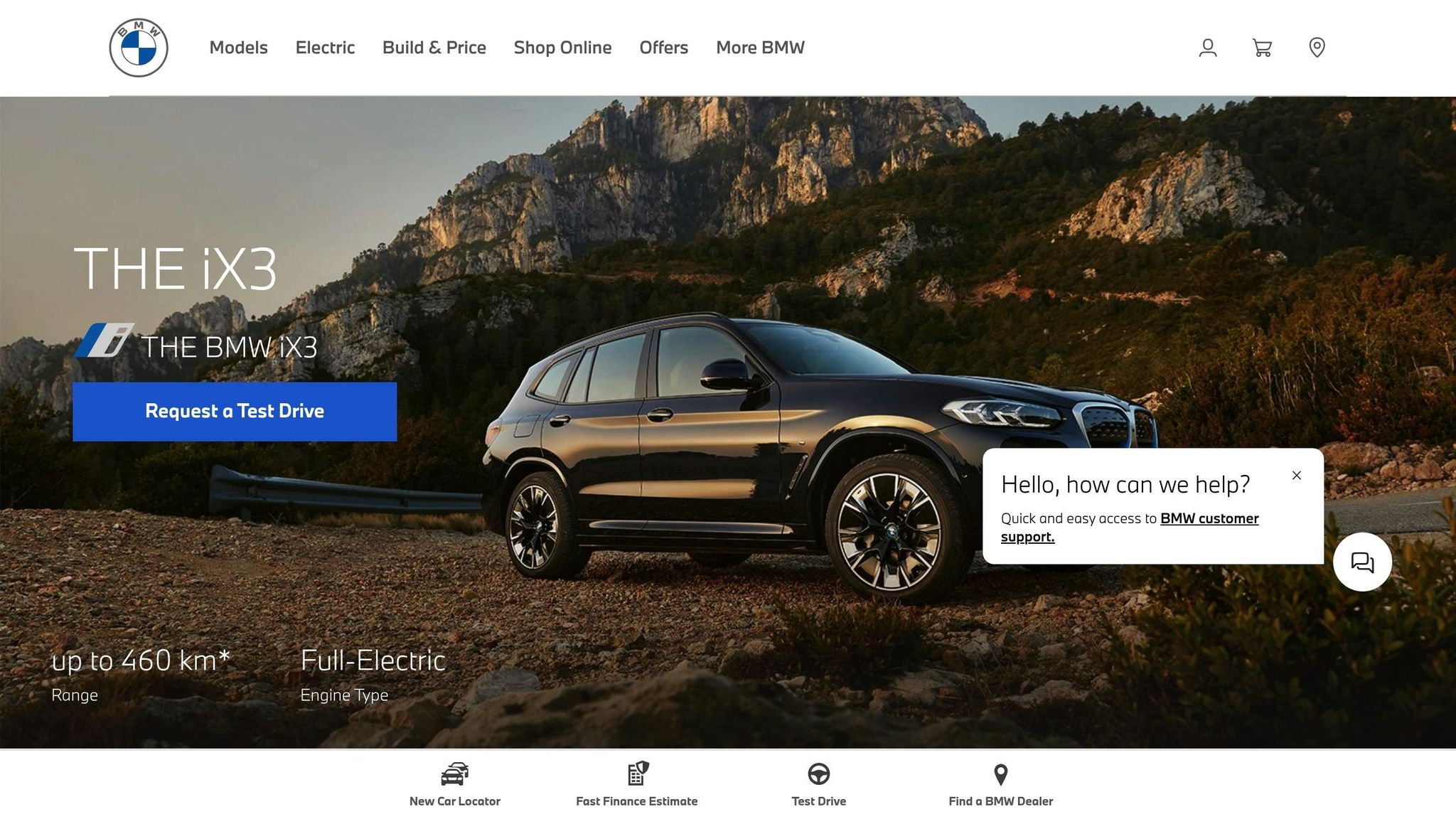
Range and Battery Capacity
The BMW iX3 comes equipped with a 74 kWh battery that delivers commendable performance. On paper, it offers a range of about 285 miles (WLTP), but in real-world conditions, you can expect somewhere between 180 and 204 miles. For those in a hurry, the iX3 supports rapid charging up to 150 kW, adding 62 miles in just 10 minutes. If you’re using a 50 kW fast charger, it takes about 20 minutes to boost the battery, while conventional AC charging requires approximately 1 hour and 37 minutes to fully recharge. These features make the iX3 a practical choice for both city commutes and highway drives in Kenya.
"In other words, the iX3 seems to be very efficient, and it targets the way people really use their cars"
Suitability for Kenya’s Infrastructure
The iX3 stands out with its low-mounted battery pack, which improves handling by lowering the center of gravity. Although its 2 cm lower ground clearance and rear-wheel-drive setup might not make it ideal for off-road adventures, its adaptive suspension ensures a comfortable ride on paved roads. Drivers can switch between comfort and sporty modes, allowing the vehicle to handle various road conditions with ease. Carwow gave the iX3 an impressive 4.4/5 rating, highlighting its adaptive suspension for delivering a smooth and enjoyable driving experience on Kenya’s roads.
Availability in Right-Hand Drive
The BMW iX3 is available in a right-hand drive configuration, aligning perfectly with Kenya’s driving requirements.
Affordability
As part of Kenya’s premium EV market, the iX3 makes a strong case for its price. With features like regenerative braking and Eco Pro mode, it maximizes range while keeping running costs manageable.
9. Ora Good Cat

Affordability
The Ora Good Cat stands out as one of the more budget-friendly electric vehicles in Kenya. Pre-owned models are priced between KSh 2,500,000 and KSh 4,000,000, making it an accessible choice for many EV enthusiasts. This compact car focuses on providing efficient and reliable electric performance while keeping costs manageable. Plus, it comes with multiple battery options to suit a range of driving needs, adding extra flexibility for buyers.
Range and Battery Capacity
The Ora Good Cat offers a variety of battery configurations to accommodate different preferences. With capacities ranging from 47.8 kWh to 63.1 kWh, the car delivers solid performance across its trims. The 400 Tech and Pro trims can travel up to 249 miles (NEDC), while the Ultra trim pushes the range to about 311 miles. In everyday city driving, the 400 Tech variant achieves around 205 miles, reflecting a more realistic performance for urban use.
Availability in Right-Hand Drive
Designed to meet Kenya’s right-hand drive requirements, the Ora Good Cat is well-suited for the country’s road regulations. It has already been introduced in several markets in this configuration, ensuring its compatibility with local driving standards.
Suitability for Kenya’s Infrastructure
The Ora Good Cat is tailored for urban driving, making it a great choice for cities like Nairobi or Mombasa. However, its 145mm ground clearance might be less ideal for rougher rural roads. While it thrives on well-maintained highways and city streets, it’s not designed for off-road conditions. On the safety front, the car boasts a five-star Euro NCAP rating, offering peace of mind for drivers. For those who mostly stick to city commutes with occasional highway trips, this EV strikes a practical balance between affordability and functionality.
10. Volkswagen ID.4
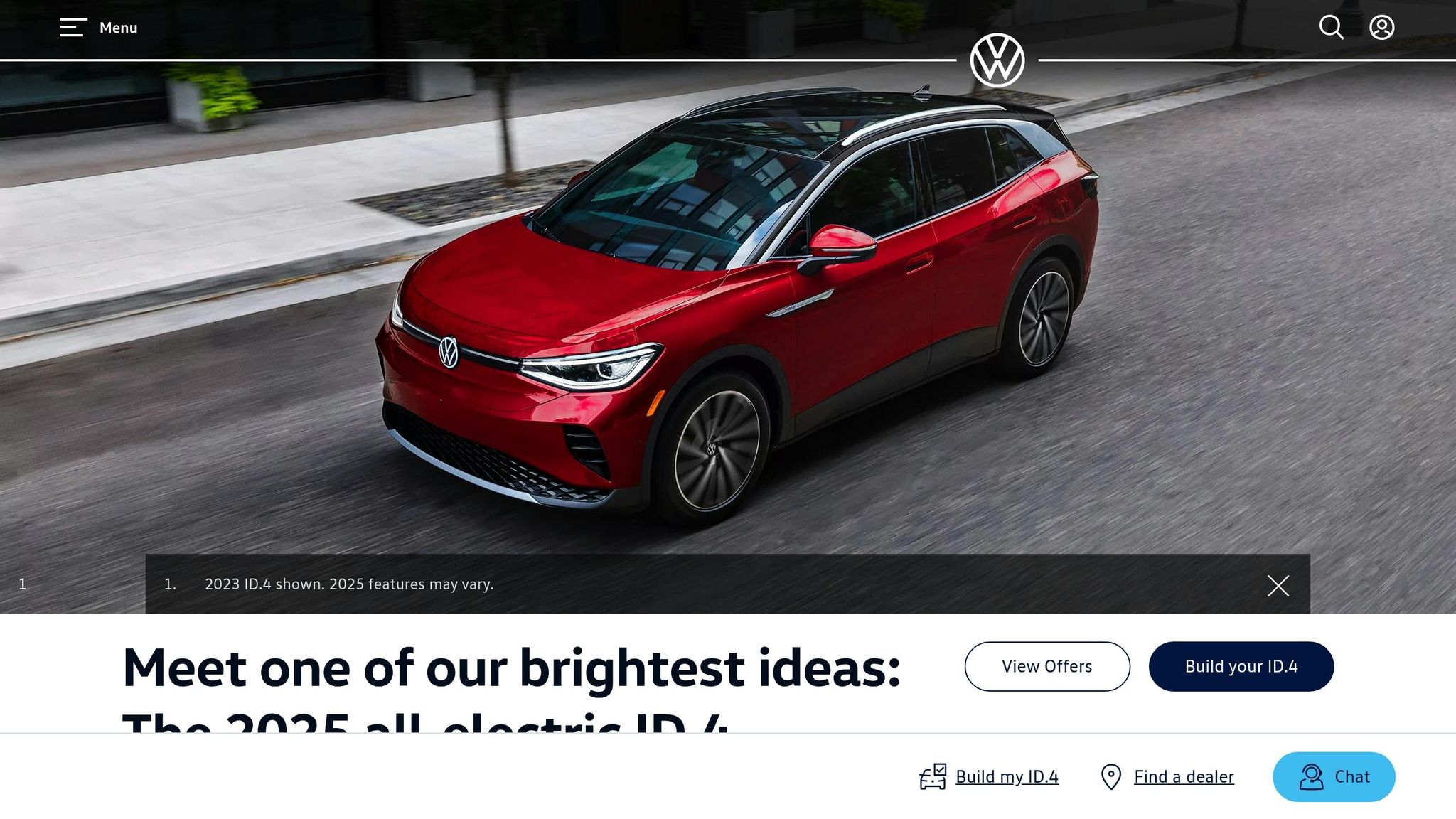
The Volkswagen ID.4 combines premium features with practical pricing, making it a strong contender in Kenya’s growing electric vehicle (EV) market.
Affordability
Kenyan buyers of the ID.4 enjoy significant tax advantages, thanks to the 0% import duty and a reduced 10% excise duty on EVs. For instance, a $30,000 (KES 700,000) ID.4 incurs estimated taxes – including registration, insurance, and clearance fees – of about KES 231,700. This translates to savings of KES 70,000 to KES 170,000 compared to traditional combustion engine vehicles.
Range and Battery Capacity
The 2025 Volkswagen ID.4 comes with multiple battery options: 58.0 kWh, 82 kWh, and 77.0 kWh Pro configurations. These provide ranges between 206 and 291 miles, depending on the model. The rear-wheel-drive version with the 82 kWh battery offers an impressive EPA-estimated range of up to 291 miles, while the all-wheel-drive variant delivers 263 miles. The Pro model features a 77.0 kWh usable battery capacity, offering an electric range of 445 km, with real-world estimates varying between 320 and 655 km based on driving conditions. Fast-charging capabilities allow the ID.4 to recharge from 10% to 80% in just 30 minutes at DC fast-charging stations. These features make the ID.4 a versatile and appealing option for Kenya’s EV market.
Availability in Right-Hand Drive
The ID.4 is available in a right-hand drive configuration, aligning perfectly with Kenya’s driving regulations. Volkswagen vehicles are exclusively distributed in Kenya by CFAO Mobility Kenya. Additionally, the rising trend of sourcing right-hand drive EVs from markets like Thailand creates more import opportunities for Kenyan buyers.
Suitability for Kenya’s Infrastructure
Whether navigating city streets or cruising highways, the ID.4 delivers a smooth and refined driving experience. Its quiet cabin and comfortable ride have earned it high praise, including an 8.5/10 rating from Car and Driver, which highlighted its "easy-going demeanor, spacious cabin, solid range, and surprising comfort". With its higher ground clearance compared to sedans, the ID.4 is well-equipped to handle Kenya’s diverse road conditions.
The vehicle also comes with a 3-year Electrify America Pass+ membership, including 500 kWh of charging. However, this benefit may require adaptation to Kenya’s developing charging infrastructure. For long-distance travel, while planning around charging stations is still necessary, the ID.4’s substantial range makes it a practical choice for intercity journeys. Its combination of range, comfort, and adaptability positions it as a strong option for Kenyan drivers.
Import Rules and Tips for Kenyan Buyers
Bringing an electric vehicle (EV) into Kenya involves following specific guidelines laid out by the Kenya Bureau of Standards (KEBS) and Kenya Revenue Authority (KRA). These rules are essential for avoiding delays and ensuring a smooth import process. As Kenya’s EV market continues to grow, understanding these regulations makes owning an electric vehicle more accessible.
Key Import Regulations
Age Restrictions: Kenya enforces an 8-year age limit on all imported vehicles, including EVs. This limit is calculated from the year of first registration. Make sure to confirm the manufacturing date before purchasing to meet this requirement.
Battery Health Requirements: EVs must meet an additional condition compared to traditional vehicles. According to Esther Ngari, Managing Director of KEBS:
"all used / second-hand electric motor vehicles must have battery life not less than 80% to be allowed for importation into the country."
This ensures that imported EVs are reliable and suitable for use on Kenyan roads.
Right-Hand Drive Mandate: All vehicles imported into Kenya must be right-hand drive, in line with the country’s traffic regulations. This standard reflects Kenya’s historical ties to British road systems and current safety measures.
Pre-Shipment Inspection: KEBS mandates pre-shipment inspections through authorized agents in exporting countries like Japan, UAE, Thailand, Singapore, South Africa, and the UK. These inspections verify that the vehicle meets safety and environmental standards before leaving the country of origin.
These regulations are critical for understanding the import process and managing costs effectively.
Understanding Import Costs
Importing an EV to Kenya involves several costs that influence the total investment:
Import Duty and Taxes: The standard import duty for vehicles is 25% of the Current Retail Selling Price (CRSP). However, EVs enjoy a reduced excise duty rate of 10%, regardless of battery size or motor capacity. This provides a significant cost advantage over combustion-engine vehicles, where excise duty increases with engine capacity.
Other costs include 16% Value Added Tax (VAT), a 3.5% Import Declaration Fee, and a 2% Railway Development Levy. The CRSP, which depends on battery capacity and drivetrain configuration, plays a major role in determining these expenses.
Streamlining Your Import Process
Work with Experienced Importers: Partnering with seasoned importers can simplify the process. They can help verify technical specifications, calculate total landed costs (including duties, VAT, fees, shipping, and insurance), and ensure compliance with battery certification and customs requirements.
Double-Check Battery and Drivetrain Details: Before shipping, confirm the vehicle’s battery capacity and drivetrain configuration. The KRA uses these details for CRSP valuation, and inaccuracies can lead to delays or unexpected costs.
Stay Informed on Regulatory Updates: Import procedures and CRSP schedules are regularly updated by the KRA. Consulting customs experts or industry professionals can help you stay ahead of changes and avoid disputes. For instance, new CRSP rules set to take effect in 2025 highlight how quickly regulations can shift.
Take Advantage of Incentives: While Kenya doesn’t yet have comprehensive EV legislation, the government supports EV adoption through tax benefits. The reduced excise duty is a key incentive that makes importing EVs more appealing than traditional vehicles.
Explore Financing Options: Consider financing plans to make EV ownership more affordable. Some financial institutions now offer specialized loans for EVs, acknowledging their lower running costs and environmental advantages.
Kenya is aiming to increase EV imports to 5% of all vehicle imports annually by 2025, targeting 16,000 EVs per year. As of December 2023, approximately 3,700 EVs have been registered, with around 500 currently in use. This growth reflects the country’s commitment to expanding its EV market.
While importing an EV requires careful planning, the long-term benefits – such as reduced running costs and lower emissions – make it a worthwhile investment for Kenyan buyers.
Electric Car Comparison Table
Selecting the right electric vehicle (EV) for Kenya involves weighing factors like cost, range, and compatibility with the local charging infrastructure. Below is a detailed comparison table to help you evaluate the top EV options based on your driving needs and budget.
| Electric Vehicle | Price Range (USD) | Range (miles) | Battery Capacity (kWh) | Kenya Infrastructure Suitability |
|---|---|---|---|---|
| Nissan Leaf | $10,400 – $20,000 (used) | 150 – 226 | 40 – 62 | Excellent – Reliable with an established service network |
| Tesla Model Y | $51,880+ (new) | 330 | 75 – 82 | Good – Advanced tech and growing charging network support |
| BYD Dolphin | $20,000 – $32,000 (used) | 265 – 310 | 44.9 – 60.48 | Very Good – Compact and ideal for urban driving |
| Hyundai Kona Electric | $27,256 – $48,000 | 261 | 39.2 – 64 | Excellent – Balanced performance with good ground clearance |
| Renault Zoe | $16,000 – $28,000 (used) | 238 – 245 | 41 – 52 | Good – Affordable upkeep and city-friendly design |
| Kia EV6 | $42,000 – $58,000 | 305 – 310 | 58 – 77.4 | Very Good – Quick charging and modern features |
| Xpeng G6 | $28,000 – $38,000 | 280 – 350 | 66 – 87.5 | Good – Packed with advanced technology for tech enthusiasts |
| BMW iX3 | $120,000+ (new) | 285 | 74 | Good – Premium quality but higher maintenance costs |
| Ora Good Cat | $20,000 – $32,000 (used) | 250 – 310 | 47.8 – 63.1 | Very Good – Compact design with low running costs |
| Volkswagen ID.4 | $38,000 – $45,000 | 275 – 291 | 52 – 77 | Good – Spacious interior and reliable German engineering |
This table highlights key specifications, but let’s dive deeper into what these numbers mean for Kenyan drivers.
The Nissan Leaf stands out as the most budget-friendly option, making it a popular choice for those seeking reliable and cost-effective transportation. On the other hand, the Hyundai Kona Electric strikes a solid balance between price and performance, making it an attractive mid-range option for buyers who want more range and features without overspending.
For those with a higher budget, the Tesla Model Y and BMW iX3 deliver premium features and performance. However, the BMW iX3’s price tag – exceeding $120,000 for new models – may limit its appeal for most buyers in Kenya.
When it comes to infrastructure compatibility, Kenya’s growing EV charging network supports many modern electric cars. Options like the BYD Dolphin and Ora Good Cat cater well to urban drivers looking for affordable and efficient vehicles. With ranges typically between 155 and 311 miles per charge, most EVs in this list are well-suited for intercity travel in Kenya.
For the best value, compact and mid-range models such as the Nissan Leaf, Hyundai Kona Electric, and BYD Dolphin offer a great mix of affordability, performance, and suitability for local conditions. These vehicles are ideal for buyers looking to make a practical and informed choice.
Conclusion
Kenya’s electric vehicle market is gaining momentum, offering a practical solution for cleaner and more cost-efficient transportation. The ten models featured in this guide provide a range of choices that cater to different budgets, driving needs, and compatibility with Kenya’s road conditions.
For those on a budget, the Nissan Leaf stands out as the most affordable option, with used models starting at around $10,400. If you’re looking for a balance between price, range, and performance, the Hyundai Kona Electric and BYD Dolphin deliver solid value and are well-suited for local roads. On the premium end, options like the Tesla Model Y and BMW iX3 bring advanced technology and luxury, though they come at a higher cost. Together, these models reflect the growing potential for electric vehicles to reshape Kenya’s transportation landscape.
This is an exciting time for EV adoption in Kenya. Government incentives, expanding charging infrastructure, and the country’s high reliance on renewable energy make the transition to electric vehicles more appealing than ever. Lower fuel and maintenance costs add to the financial advantages, making EVs a smart choice for both urban commuters and environmentally conscious drivers.
Looking ahead, local production is set to further boost accessibility. MojaEV Kenya Ltd. has announced plans to begin assembling electric vehicles locally by August 2025, with operations based at Associated Vehicle Assemblers Ltd. in Mombasa. Additionally, Spiro’s upcoming assembly plants are expected to enhance availability and affordability. These developments signal a shift toward greater local involvement in the EV market, which could significantly lower costs and expand options for Kenyan buyers.
For urban residents with regular commutes and access to charging stations, now is an excellent time to consider making the switch. Whether you choose an economical option like the Nissan Leaf or a high-end model like the Tesla Model Y, the benefits of EV ownership – cleaner energy, lower running costs, and government support – are becoming increasingly clear. Kenya’s journey toward sustainable transportation is well underway, and these vehicles are paving the way for a greener future.
FAQs
What should I consider when importing an electric car to Kenya?
When bringing an electric car into Kenya, there are several important aspects to keep in mind to ensure the car meets your needs and aligns with local guidelines.
Start by assessing the charging infrastructure in your area. Reliable and accessible charging points are vital for convenience, especially if you plan to use the car regularly. You’ll also need to consider the car’s battery range. This is particularly important in areas where charging stations are limited, as it helps avoid the stress of running out of charge during longer trips.
The upfront cost of the vehicle is another key factor. Electric cars come in a wide price range depending on their model, features, and brand, so it’s worth comparing options to find one that fits your budget. Additionally, look into any incentives or tax breaks offered for electric vehicle imports, which could help reduce overall costs.
Finally, make sure the car adheres to Kenya’s import regulations, such as the requirement for a minimum battery life of 80%. Taking these steps will not only simplify the import process but also ensure that your vehicle is a practical and compliant choice for use in Kenya.
How is Kenya improving its charging infrastructure to support electric vehicles?
Kenya is making strides in building its EV charging network to encourage the use of electric vehicles. The government has set an ambitious target to establish 10,000 charging stations by 2030. As part of this plan, Kenya Power is already working on 45 stations spread across six counties, with completion expected within a year. This initiative aims to ease range anxiety, making EVs a more practical choice, particularly in urban areas where daily commutes are predictable.
Looking ahead, the number of charging stations is expected to surpass 100 by mid-2025, greatly enhancing convenience and accessibility for EV users. These efforts are part of a larger vision to electrify 5% of Kenya’s vehicle fleet by 2025, marking a step toward a cleaner and more efficient transportation system.
What are the import rules and benefits for electric vehicles in Kenya?
Kenya has rolled out a range of measures to make importing electric vehicles (EVs) more appealing and affordable:
- Lower Import Duty: EVs are subject to just 10% import duty, compared to the 35% levied on traditional fuel-powered cars.
- Excise Duty Exemption: Unlike gasoline or diesel vehicles, EVs are completely exempt from excise duty.
- VAT Waiver: The usual 16% VAT has been eliminated for EVs, reducing their overall cost.
- Battery Quality Standards: Imported used EVs must have at least 80% battery life, ensuring buyers receive vehicles in good condition.
- Support for Charging Stations: To encourage EV usage, the government is backing the development of charging infrastructure through reduced electricity rates and partnerships with private companies.
These initiatives not only make EVs more budget-friendly but also ensure quality and convenience for buyers, positioning Kenya as a welcoming market for electric mobility.


